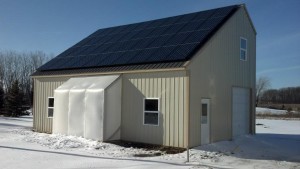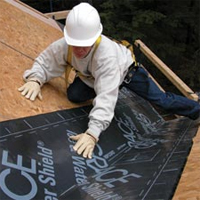Welcome to Ask the Pole Barn Guru – where you can ask questions about building topics, with answers posted on Mondays. With many questions to answer, please be patient to watch for yours to come up on a future Monday segment. If you want a quick answer, please be sure to answer with a “reply-able” email address.
Email all questions to: PoleBarnGuru@HansenPoleBuildings.com
DEAR POLE BARN GURU: We put up 30-40 pole barn a year ago windows leak we caulked but can’t get it to stop , trying to get it fixed before we insulate, holding us up Thanks NO SUN IN SUNMAN
DEAR NO SUN: Installing windows can be tricky! If a step is skipped from the manufacturer’s instructions, or isn’t done “right” big problems may occur. At a minimum, the warranty will be no good if window is installed other than to manufacturer’s specifications. Even worse, rain water can leak behind windows and enter walls. If wet buildings can’t dry properly, this wetness can lead to serious building damage. Moisture can also lead to wood rot which creates structural problems.
When I first started constructing pole barns in 1991, we hired the best crews we could possibly find to do our installations. Most of these builders were true craftsman, yet about 10% of the windows they installed, we had call backs on due to leaks. It was not due to poor workmanship, but it was due to using standard flanged windows.
We found a solution – we started using only vinyl windows with integrated J Channels and our call backs due to window installations disappeared!
In your case, the “fix” is going to take some work.
1. The siding near the window needs to be removed.
2. Then take the window out of the hole (hopefully you installed it with screws through the flanges, and not nails).
3. Run a generous bead of caulking on the face of the framing where the window flange will be reattached.
4. Put the window back in the hole, making sure the weep holes are at the bottom (double check this one).
5. Install steel J channel around window. Another generous bead of caulk will need to be placed between the window flange and the back face of the J channel, as well as between every overlapping J channel joint. As J channel is installed, calk between J channel and window flange. Basically, you are caulking at every joint which can’t be seen from the street when assembled.
There is a trick to installing window J correctly, if you are unsure of this step – hire a professional to do it.
How to Cut and Install J Channel
1. You will be cutting four pieces of J channel. Square cut them with two the width of the outside of the window PLUS four inches, two at the height plus four inches. Cut down the two bends of each piece of trim two inches on each end.
2. Take one of the width pieces, square cut the small “face” side back equally on each end so the resulting face is equal to the window width, plus the face of the J channel (results in cutting about an inch off each end).
3. Bend the two “tabs” created between the bend cuts up. Install the trim below the window, with the tabs running up each side.
4. The two height pieces get cut just like the bottom width piece, however the bottom exposed face, will be cut at a 45 degree angle to give a mitered look when installed. Put one of these on each side of the window, with the vertical tabs of the bottom trim, between the window and the vertical trims. The back flange of the sides, will be on top of the bottom trim back flange. The angled face will overlap the face of the bottom trim. Bend the lower tabs into the channel of the bottom trim, the upper tabs over the top of the window. Done right, the bottom corners should look nice and clean, if the bottom face hangs out past the verticals, use tin snips to trim it back.
5. The top piece will be like the bottom, only with 45 degree cuts on each end of the face. Its 45’s will overlap the vertical faces and its back flange will overlap the side trim back flanges.
6. Next install self-adhesive flashing tape (3M All Weather Flashing Tape 8067 or similar) around the window.
7. Replace the wall steel. Use caulking to seal the steel against the inside of the J channel, paying special attention to the lower corners. If a steel high rib ends up where water could flow down the J channel and into the high rib, be sure to fully seal the top of the rib.
Provided you have followed all of these steps, you will have beautifully trimmed windows which will not leak.









